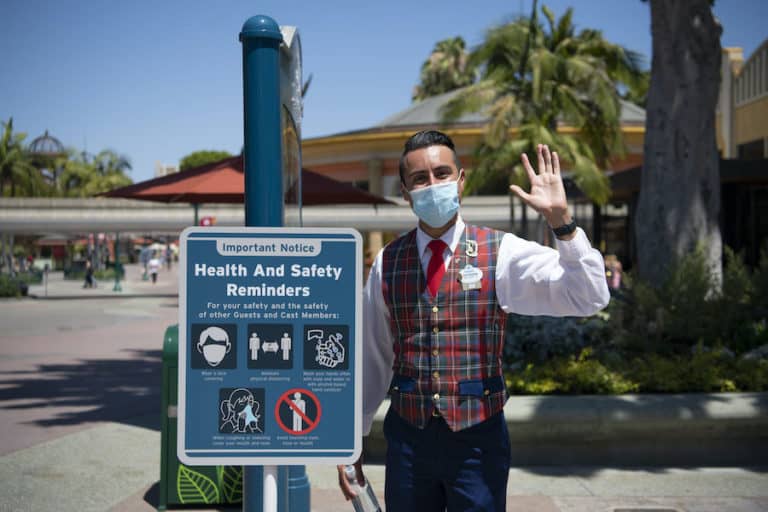Leisure Development Partners (LDP) is a leading consulting practice focused on leisure and entertainment real estate, specialising in market and economic testing for all stakeholders. Recent interactions with clients around the globe indicate that staffing, or a lack of, continues to trouble operators of all attraction types.
This was evident to me after a series of recent trips across the US during the busy spring break season. Two words resonated – “Now Hiring”. Typically, these words are common this time of year as operators are gearing up for the summer and looking for seasonal staff. However, as the industry continues to navigate challenges related to the pandemic, staffing issues are playing a bigger role.
During one visit to a major theme park in Florida, many of the non-major coaster rides were closed. This is a disappointment to families visiting with younger children who are unable to ride coasters, due to height restrictions. While ride closures for maintenance during the slower winter or early spring months are typical, this is unusual during a spring break week in April and no “closed for maintenance” signs were visible.
One must assume this is because there were not enough staff available to open the rides. In addition, many of the food and beverage outlets were also closed, limiting options for guests throughout the park. It was a similar scene at a popular theme park in California. There appeared to be missing ride attendants and shuttered food and retail stands.
Staffing attractions: where did all the employees go?
When the pandemic shut down attractions across the world in 2020, employees found more stable ground in other industries such as cleaning service and product companies, delivery services and, eventually, hotels. Others realised they could live with less income, surviving on unemployment, reduced furlough salaries or COVID related economic payments, reticent to return to work.
Staffing issues stretch beyond just the US too. In well-established attraction markets of Western Europe, there is increasing competition for visitors’ time and money. This is due to the pure number of attractions, followed by accelerating inflation which reduces disposable incomes, and now competition for employees.
It is likely to be even more of a challenge in emerging markets such as the UAE or KSA. Here, filling positions is already difficult and the pace of development will exacerbate staffing issues even more as additional new attractions continue to open and grow the entertainment offer.
What is the impact?
If staffing shortages continue and attractions are not able to offer a solid guest experience, guests may decide to spend their entertainment time and dollars elsewhere. Perhaps at the beach, public park or on in-home entertainment. This will affect the attraction’s ability to generate revenues.
This alternative guest choice may be dangerous for the industry, where big operators are already pricing out the middle class.
While decreased visits and admission revenue is bad news for any attraction, it does not end there. In-park spending is the money guests spend on food, beverage, VIP experiences, and merchandise after they pay to enter the attraction. Industry-wide, this can be between 30 to 40 percent of a guest’s total spend. So, the impact on the bottom line from closed restaurants, shops and kiosks can be significant.
What can be done?
Interviews with attraction operators, ranging from go-cart tracks to water parks, indicated that staffing, or lack of staff, is currently their biggest challenge. Typically, there are lines of people applying for upcoming seasonal positions in abundance. But now operators are taking extra measures to attract potential employees. A key desire is to be fully staffed come Memorial Day weekend.
Perhaps the most obvious incentive is increasing the hourly wage for attraction employees. This is an industry where, in many parts of the world, wages have traditionally been low.
We found that, in addition to offering higher than ever before hourly wages, many operators are giving out extra incentives. For instance, “on the spot” job offers, sign-on bonuses, “daily pay” (work today get paid tomorrow) and very flexible schedules. They are even extending ticket, season pass and in-park spending discounts to employees’ family members and friends.
On a different note, since the pandemic started, many attraction operators are taking another look at their operating season. The ability to extend a seasonal operation into the shoulder months can also have positive ramifications for employees. Many parks do this with things like outdoor events, holiday extravaganzas and special shows
The ability of an operator to offer full-time employment makes them more attractive to those looking for stable work. Many operators now offer corporate training and development programs to seasonal staff – a smart move indeed.
Attraction staffing: changes are afoot
To capitalise on the peak summer season, it appears that attraction operators are going to have to pay employees higher wages and offer increased incentives. This will be necessary if they are to have the volume of staff necessary to offer a great guest experience.
Without that experience, guests won’t stay as long. They also won’t spend as much in-park, and may not return, instead choosing other forms of entertainment.
For many attraction types, staffing is already the highest operating expense category. It is typically between 20 and 40 percent of total revenues.
For operators who’ve raised admission prices in the last couple of years to offset lower attendance and revenues due to capacity restrictions and guests’ desire for more personal space, this increase in labor costs will no doubt be disappointing. However, it appears necessary to keep the industry moving forward during these challenging times.
The upside, of course, is better pay, benefits and a more supportive environment for employees. These are people who are key stakeholders in our industry.
